
The Enduring Appeal and Rich History of Encaustic Painting
Explore the fascinating history, techniques, and enduring appeal of encaustic painting, from ancient Egyptian Fayum portraits to modern artistic expressions. Discover why this hot wax medium continues to captivate artists and collectors.
The Enduring Appeal and Rich History of Encaustic Painting
I often find myself wondering what draws us to certain art forms, what makes them grab you and pull you into their story across millennia. For me, that’s encaustic painting. And yes, it literally involves fire and molten wax, which sounds a bit wild, right? (And trust me, my studio has seen its share of fiery mishaps – a melted paintbrush or two, a scorched surface, even a near-miss with my hair – all part of the charming chaos! And don't even get me started on the cleanup; it's like a constant battle against tiny, colorful wax glaciers). But beneath the apparent danger is an ancient technique that feels both primal and incredibly modern. It connects us to a fundamental human desire to create and preserve, using the earth's own materials, yet its versatility pushes the boundaries of contemporary art in ways few other mediums can. It's a fascinating narrative of discovery, loss, and a tenacious comeback, much like a beloved recipe tucked away, only to be rediscovered and prove some things are simply too good to forget. The vibrancy and remarkable durability of this art make you wonder how it could have ever slipped into the shadows. So, join me as we journey through the millennia-spanning history of encaustic painting – from its fiery ancient origins, through its long slumber, to its vibrant modern revival – exploring its unique heated wax techniques, and its enduring appeal that continues to ignite artistic passion today.
What Exactly Is This "Hot Wax" Art?
Before we dive into the depths of history, let's get on the same page about what encaustic actually is. Imagine pigments mixed with heated beeswax and usually a small touch of damar resin. You apply it hot, often with brushes, spatulas, or other tools, and then fuse each layer with heat – a heat gun, torch, or even a hot iron. Working with it feels like an incredible dance between control and surrender, feeling the molten wax flow and solidify. I still remember the time I tried to use a tiny detail brush, only for the wax to instantly solidify around the bristles, turning it into a waxy club – a happy accident that forced me to embrace bigger, bolder strokes! Just last week, I tried a new blend, and instead of smooth layers, I got these beautiful, crinkly textures – a truly happy accident that expanded my artistic vocabulary! It’s these unexpected moments that often lead to the most interesting discoveries, isn't it?
The Core Ingredients of Encaustic
Most artists today gravitate towards either unbleached natural beeswax, which offers a creamy, warm tone and subtle honey scent, or bleached white beeswax for purer, brighter color rendition. Both are incredibly stable and archival. Historically, ancient artists would have used naturally occurring pigments, often earth-based like ochres, and minerals such as lapis lazuli and malachite, much like today's preference for finely ground mineral or earth-based varieties for their stability and lightfastness, ensuring colors remain vibrant for centuries. Imagine pigments like rich ochres, deep lapis lazuli, or vibrant malachite, all suspended in this luminous wax – the possibilities are endless.
The addition of damar resin, a natural tree sap primarily sourced from Southeast Asia, is crucial. It acts as a hardener, significantly raising the wax's melting point, making it more resistant to heat, and increasing its luminosity and adhesion – essentially, it helps the wax stand up to time and shine brighter. This unique blend allows for layers that are robust, yet beautifully translucent, giving encaustic its signature deep glow and almost geological depth. A common modern starting ratio for encaustic medium is about 8 parts beeswax to 1 part damar resin, but artists often adjust this for desired effects. For instance, a higher resin content makes a harder, more polishable surface, while more wax results in a softer, more carvable film. I've found playing with this ratio can dramatically alter the surface quality and artistic possibilities.
Essential Tools for Encaustic Painting
Different heat tools offer distinct possibilities. A heat gun, for instance, provides gentle, diffused heat, ideal for smoothly fusing layers, achieving subtle blends, or creating soft textures. A small propane torch offers more intense, focused heat, allowing for rapid fusing, creating interesting bubbles or craters, or quickly polishing a surface to a high sheen (though it requires a lighter touch!). And a heated palette keeps your wax molten and ready for application, much like a painter's palette. It's essentially an electric griddle or specialized art tool that maintains the wax at a consistent working temperature. If you're curious about the nitty-gritty of the process, I highly recommend checking out our definitive guide to encaustic painting.
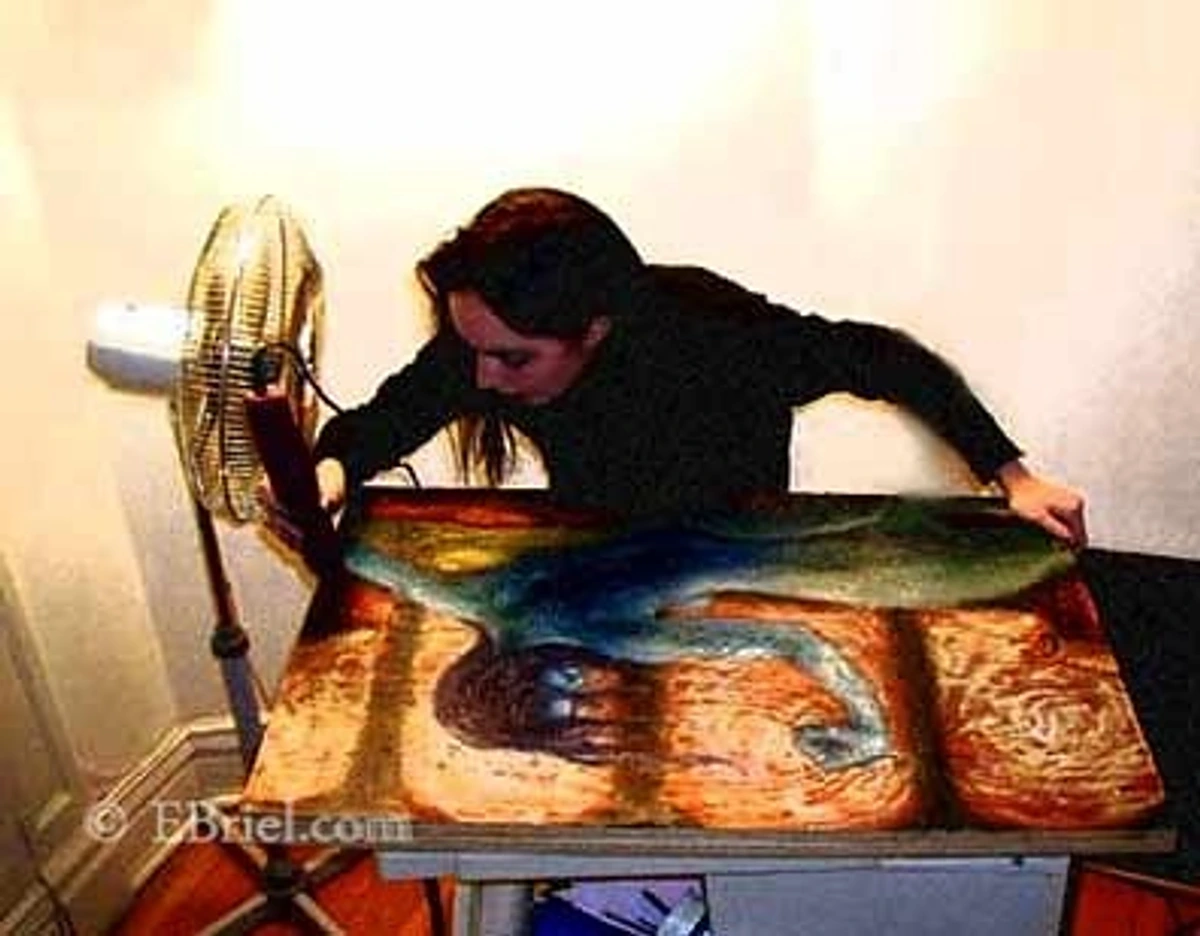
https://live.staticflickr.com/222/479422964_34147de0a5_w.jpg, https://creativecommons.org/licenses/by-nc-nd/2.0/
This vibrant, durable medium didn't just appear out of nowhere; its story is as ancient as it is compelling, connecting us directly to the ancient world through its unique, fiery approach. What's truly remarkable is how its inherent properties – especially its ability to seal, protect, and preserve against moisture, insects, and decay – made it ideal for enduring the ravages of time.
The Ancient World: Where Wax Met Immortality
What if I told you that some of the most vibrant and enduring portraits in history were painted with melted wax? It sounds like something out of a historical drama, doesn't it? I often feel that way when I'm lost in the process, imagining the ancient artists, their hands moving with the same molten wax I use today, creating legacies. Picture this: You're not in some sterile modern art studio; you're in ancient Egypt, like 2,000 years ago, far before oil paints or acrylics were even dreamed of. This is where encaustic truly shines in its earliest, most iconic form: the Fayum mummy portraits. These weren't just quick sketches. These were stunningly realistic portraits, painted on rigid wood panels – often sycamore, cedar, or lime wood chosen for their stability and smooth surface – and attached to mummies. The vibrant colors, the lifelike expressions... it's just incredible. It makes you pause and wonder about the lives captured so vividly, doesn't it?
Artists used melted wax, natural pigments (often earth-based like ochres, and minerals such as lapis lazuli and malachite), and heated tools, much like today, to create these incredibly durable, almost photographic likenesses. These portraits were remarkable not just for their realism, but also for their profound purpose: serving as a lasting, idealized, and deeply personal representation of the deceased, intended to ensure their spirit's journey into the afterlife. Think about it: art that survived millennia, still looking as fresh as if it was painted yesterday. That's the power of wax. Its ability to seal, protect, and preserve has ensured their incredible longevity, standing up to the harsh desert environment, resistant to moisture, insects, and fading. It makes me wonder if they knew just how long their art would last, or if it was just a happy accident of material choice. Maybe a bit of both.
Of course, working with heated materials and natural pigments in ancient times must have been a formidable challenge – inconsistent heat sources, the potential inhalation of pigment dust or wax fumes... I mean, I struggle with my modern heat gun sometimes; imagine trying to maintain a consistent temperature with rudimentary tools like hot coals or heated metal rods! We often think of our ventilated studios, but imagine the conditions then – a fiery endeavor that, while beautiful, certainly carried risks of burns and respiratory issues. You can even explore the enduring influence of ancient Egyptian art on modernism to see how deep these roots go.
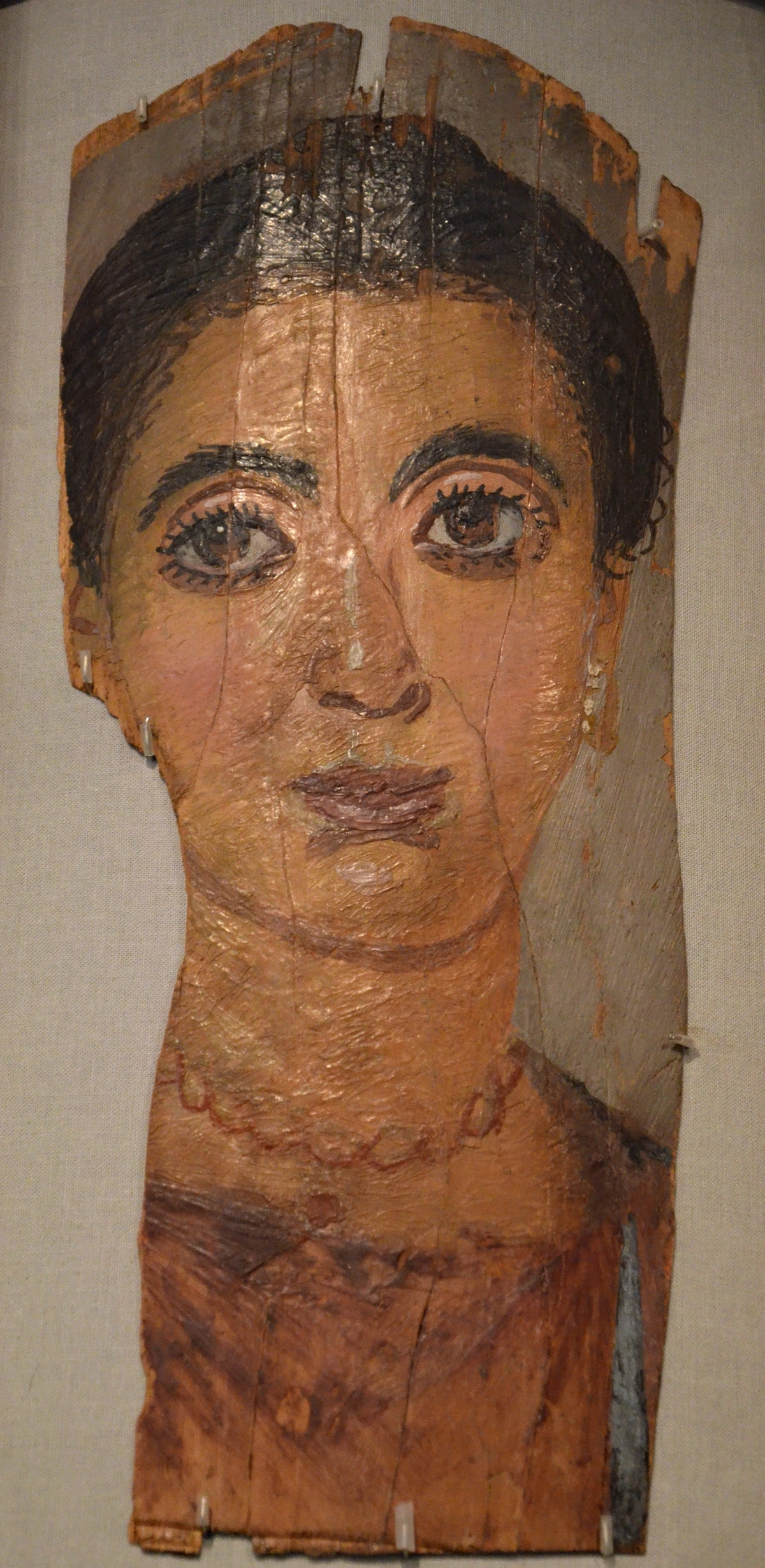
https://upload.wikimedia.org/wikipedia/commons/0/0d/Mummy_portrait%2C_wax_encaustic_painting_on_sycamore_wood%2C_2nd_century_AD%2C_Roman_Egypt%2C_Badisches_Landesmuseum_Karlsruhe%2C_Germany_%2831838861225%29.jpg, https://creativecommons.org/licenses/by-sa/2.0
The Greeks and Romans, ever practical, also got in on the action, seeing its value beyond just portraiture. The word "encaustic" itself, from the Greek enkaustikos, meaning "to burn in" or "to heat," hints at its fiery application. They used it to paint ships, adding vibrant, weather-resistant color to vessels that braved the seas – imagine warships gleaming with enduring pigments, practically setting the seas ablaze with color! This wasn't just decorative; the wax provided an invaluable protective layer against saltwater, harsh elements, and even marine borers, ensuring the longevity of the pigments and the vessels themselves. Beyond maritime uses, encaustic adorned marble statues, brought life to architectural elements in temples and private homes, and was even employed in decorating sarcophagi and furniture. What's more, Roman artists also employed encaustic for impressive wall paintings, showcasing its versatility for large-scale, durable murals. But think beyond just art too – wax was crucial for sealing, casting, and even preserving texts in ancient times, truly showcasing its versatility. It wasn't just decorative; it was incredibly practical, offering both beauty and unparalleled resistance to the elements, making it ideal for everything from preserving monumental artworks to protecting everyday objects from the harsh Mediterranean climate. What's not to love about something that offers both lasting beauty and incredible durability? In fact, the unique stability and reversibility of wax have even made it valuable in contemporary art restoration and conservation, a silent testament to its enduring reliability. It’s truly amazing how a medium could be so foundational across so many cultures and applications. I mean, think about it – a painting material that has quite literally stood the test of time, outlasting empires! Even some early Byzantine icons occasionally incorporated wax, acknowledging its preservative qualities. What does this enduring legacy tell us about the power of materials, and how much can we really know about their future?
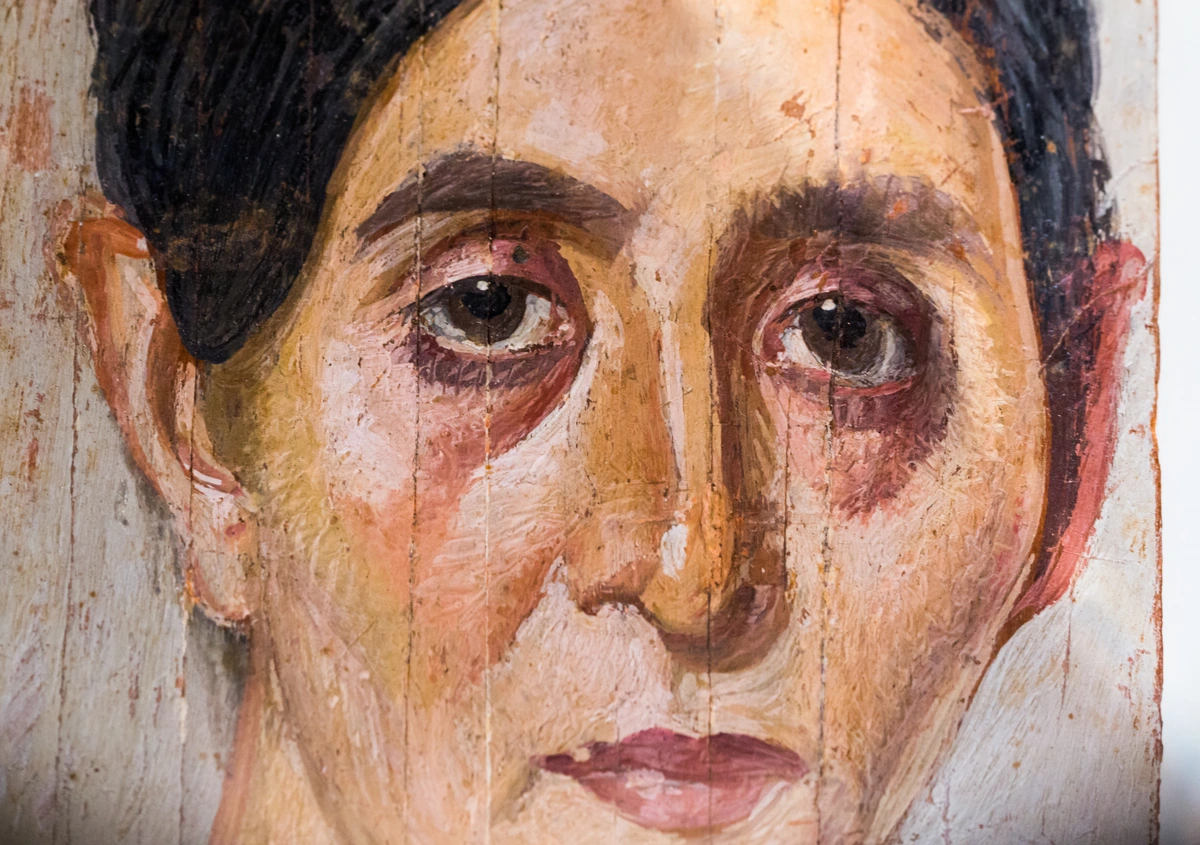
https://upload.wikimedia.org/wikipedia/commons/5/59/Mummy_portrait_of_a_woman_from_er-Rubayat_-Berlin_AS_31161-9%2802%29.jpg, https://creativecommons.org/licenses/by-sa/4.0
So, from the intricate funeral art of Egypt to the vibrant, protective coatings on Roman ships and walls, encaustic proved itself indispensable. But if it was so robust and beloved, what on earth happened to it?
The Long Slumber: Why Did Encaustic Fade Away?
So, if this technique was so robust and beloved, why on earth did it seemingly vanish for so long? It's a question that always makes me pause, wondering what forces conspired against such a powerful medium. Honestly, the answer, as historians generally agree, boils down to a classic tale: convenience versus craft, often exacerbated by shifting societal values and economic realities. The exacting demands of working with hot wax – the specialized tools, the constant heat source, the need for a rigid support, and frankly, the potential for messiness and difficulty in achieving smooth, seamless blends – meant it was a commitment, a proper craft. It’s a bit like deciding to bake sourdough from scratch every day when store-bought bread is so much easier. Sometimes, the effort just outweighs the immediate reward, right? Or perhaps, like trying to build a complex Lego castle when a simple snap-together model is waiting. What does this tell us about the fickle nature of artistic trends, and the constant human search for efficiency?
As the Roman Empire declined and the Middle Ages rolled in, artistic patronage and focus shifted significantly. The rise of Christianity, for example, often favored grand frescoes for church interiors and easily transportable panels for religious icons. Art production became less about individualized, funerary portraits and more about didactic narratives for communal spaces or devotional objects. Frescoes became popular for large church walls, and eventually, tempera and oil paint emerged. These newer mediums were, frankly, far easier to work with and offered aesthetic qualities encaustic struggled to match on a grand scale, particularly in terms of blending and portability.
Tempera, made with egg yolk (think of it like a natural, fast-drying binder for pigments), allowed for incredible precision and crisp detail, perfect for the intricate religious icons of the Middle Ages. Its quick drying time meant sharp lines and clean separations between colors – quite different from the fluid blending of wax. But then came oil paint. Oh, what a game-changer! Its famously slow drying time, due to the gradual oxidation of the oil (like a slow chemical dance with the air), offered unprecedented flexibility. Artists could blend colors seamlessly, create subtle glazes, achieve the smoky haze of sfumato (think Leonardo da Vinci's masterful blending in the Mona Lisa), build up rich impasto textures (like the expressive brushstrokes of a Rembrandt), and conjure deep luminosity. This allowed for continuous tonal gradations over vast areas, effortlessly building atmospheric depth and illusionistic realism that was incredibly challenging, if not impossible, to achieve with rapidly cooling wax.
Its workability meant artists could mix their pigments (which often included rich organic and inorganic compounds) and go, taking their art anywhere without needing a portable kiln! By contrast, encaustic's rapid cooling made achieving seamless blends and subtle tonal shifts, prized for realism, incredibly challenging, especially for large, complex compositions. Its inherent need for rigid supports also significantly limited its adaptability to canvas, which was becoming increasingly popular as a more portable and flexible surface for painting. In a world shifting towards efficiency and new aesthetic ideals, encaustic's demanding process simply became too cumbersome, pushing it into the background for centuries. It wasn't that the technique was forgotten entirely, but rather that its practical application became niche, limited to specialized craftsmen rather than the broader realm of fine artists. This shift meant that for centuries, the vibrant potential of wax painting remained largely untapped, a lost art waiting to be rediscovered. It truly makes me shake my head in disbelief, imagining all those potential masterpieces that never saw the light of day because the path forward seemed just a tad too difficult. It’s like abandoning a brilliant idea because the initial effort feels overwhelming, isn't it? What a shame! But even as the fiery art seemingly dimmed, its unique qualities meant it was merely dormant, waiting for its moment to be rekindled. And that's exactly what happened eventually.
Medium | Key Advantage (over Encaustic) | Disadvantage (compared to Encaustic durability) |
|---|---|---|
| Fresco | Ideal for large murals, permanent, fast execution | Immovable, less color vibrancy, difficult to correct |
| Tempera | Fast drying, precise detail, portable, sharp lines | Less blending time, can be brittle over time, less depth/luminosity |
| Oil | Slow drying, flexible blending, rich color, portable | Longer drying times, can darken/yellow over time, less tactile |
| Encaustic | Luminous depth, extreme durability, unique texture, preserves well | Requires heat, specialized tools, rigid support |
A Flicker of Life: The Early Revivals
But good things rarely stay hidden forever, do they? And despite its long slumber, encaustic wasn't entirely forgotten, merely re-assigned to more specialized, practical uses. A subtle re-emergence in Byzantine icon painting by the 11th century, often incorporating wax for preservation, offered a glimmer – a quiet acknowledgment of its inherent protective power. However, a true, widespread artistic revival would take much longer, requiring a global fascination with classical antiquity to dust off these 'lost' techniques.
Early Experiments and Painstaking Re-discoveries
As the centuries turned, a renewed fascination with classical antiquity sparked curiosity about these "lost" techniques. It wasn't a sudden explosion, more like a slow, experimental re-awakening. We see figures like the French antiquarian Comte de Caylus, who, in 1755, published his findings on encaustic methods, attempting to reconstruct the ancient recipes. He documented his arduous trials, struggling immensely with the correct proportion of wax and resin, and the precise temperature for application. He often found himself frustrated with inconsistent results, sometimes yielding brittle surfaces prone to cracking, other times producing sticky, tacky finishes that collected dust, or even layers that refused to adhere properly and delaminated from the support. It was a painstaking, often frustrating process of trial and error, trying to replicate millennia-old techniques without the benefit of ancient masters to guide him, highlighting the delicate balance required with this medium. I can almost picture him, surrounded by smoking wax pots, sighing in frustration as another meticulously applied layer just wouldn't fuse – a feeling I’ve definitely known when a new paint medium just refuses to cooperate, leaving me wondering if I'll ever get it right!
Later, American artist John Vanderlyn, who even visited Pompeii in the early 19th century, tried to revive the technique for grand historical paintings. Vanderlyn, like Caylus, faced immense challenges in achieving consistency and luminosity, often finding the results less flexible and harder to manipulate than traditional oils, especially on large canvases, which encaustic inherently resists. He, too, encountered issues with the wax cracking if the support flexed, or the surface becoming dull and opaque rather than achieving the desired ancient luster, despite his best efforts to emulate the Fayum portraits. Imagine those curious artists and scholars poring over ancient texts, trying to decipher recipes, probably burning their fingers a few times in the process, much like I’ve done with new mediums. There were some successes, some spectacular failures, and a whole lot of sheer stubbornness. It really makes you appreciate the perseverance, doesn't it? You never know what gems you'll uncover if you're willing to experiment, even if it means a few scorched fingertips along the way.
The Dawn of the Modern Revival
Yet, this persistent curiosity paved the way for something much bigger – a true modern resurgence that built upon these very struggles. The real party, the true modern revival of encaustic, truly kicked off in the early 20th century, spurred by the development of safer, more precise electric heating tools. Suddenly, working with hot wax became less about juggling open flames and more about controlled, creative exploration. The rise of art schools and institutions also played a vital role in legitimizing and disseminating the technique.
Pioneers like Karl Zerbe were instrumental, founding the first formal encaustic program in the US in the 1930s at the School of the Museum of Fine Arts, Boston. He saw the vital need to establish structured teaching, clear safety protocols, and really elevate this 'forgotten' medium within an academic setting. His efforts, alongside other pioneering artists and art institutions like the Art Students League of New York, were crucial in re-establishing encaustic as a legitimate and teachable fine art medium, paving the way for a new generation of artists. Then came artists like Jasper Johns, whose iconic flag paintings didn't just bring encaustic back into the contemporary art dialogue; they redefined its potential. I remember first seeing Johns' flag paintings, and being utterly captivated by their tangible, almost sculptural quality – it felt like the art was reaching out to touch me, a sensation quite unlike anything I'd experienced before with paint on canvas.
Johns leveraged wax's unique ability to build up thick, tactile surfaces, embedding objects like newspaper fragments, fabric, or found ephemera directly into the layers, creating a profound physical presence that simply couldn't be achieved with other mediums. For Johns, encaustic wasn't just a medium; it was integral to the very meaning and physical impact of his art, pushing boundaries and proving wax could be profoundly modern. His work, alongside movements like Abstract Expressionism and Pop Art, helped create an environment where the unique materiality of encaustic was deeply appreciated. It’s hard not to feel that same excitement as artists like Robert Rauschenberg, who also explored encaustic in his "combines," or more recently, innovators like Betsy Eby and Michelle Stuart, continue to push its boundaries in abstract and conceptual art. You can learn more about Johns' incredible work in our ultimate guide to Jasper Johns.
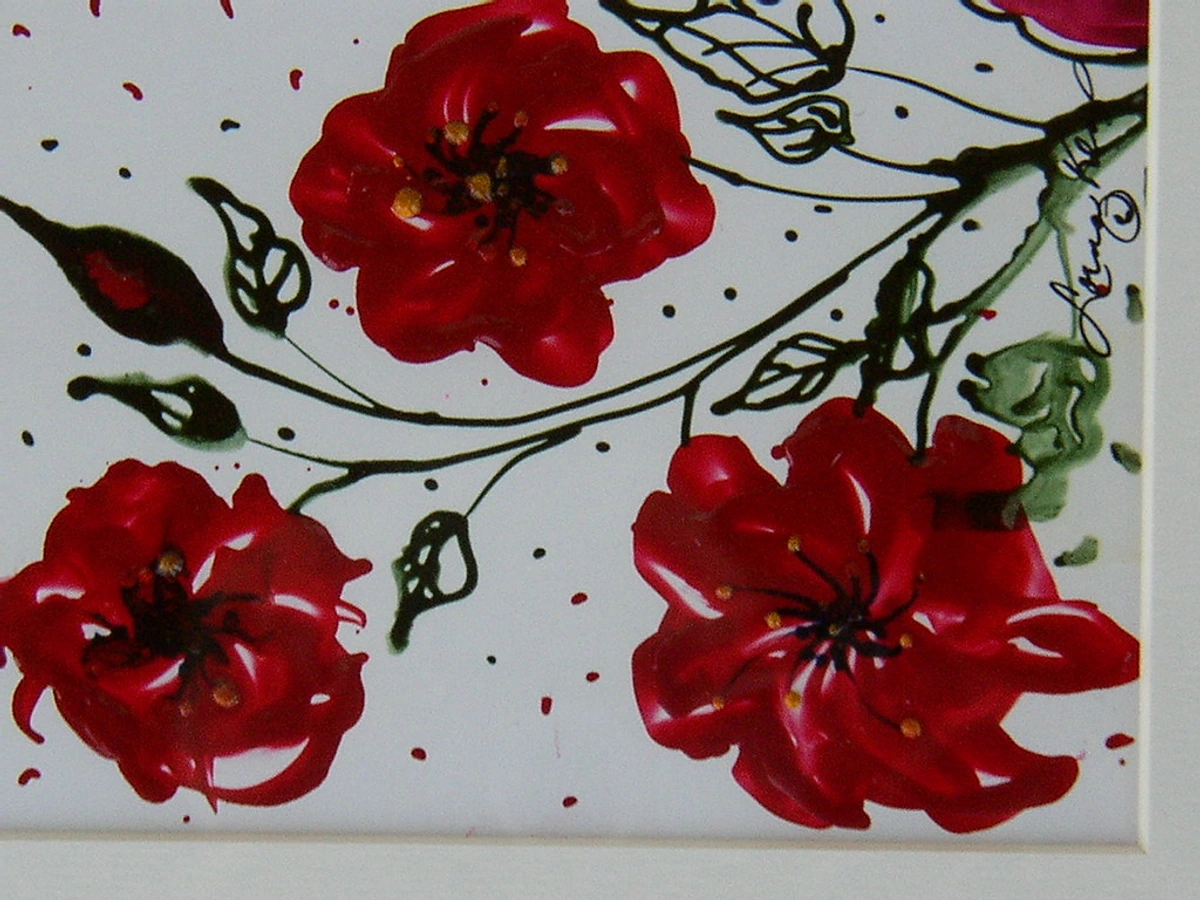
https://live.staticflickr.com/5302/5601488526_fec5209393_b.jpg, https://creativecommons.org/licenses/by-nc-nd/2.0/
Today, you'll find contemporary encaustic artists creating everything from vibrant abstract pieces that build up geological-like layers, to intricate mixed-media works incorporating collage, ink, pastels, even elements of oil or acrylic, or embedding items like leaves, threads, or metal fragments. Many artists, myself included, are also exploring its potential in compelling figurative paintings and bold sculptural installations, where layers are built up to create truly three-dimensional forms, pushing the boundaries of the medium far beyond the two-dimensional canvas. Think of pieces that extend off the wall, using the wax to build up reliefs, or even freestanding objects formed from fused layers – quite a departure from the flat mummy portraits! While the modern era has embraced its versatility, working with encaustic on a truly grand scale still presents unique challenges. Beyond the rigid support requirement, the sheer logistics of heating and fusing large areas of wax demand specialized equipment and often a team of assistants – a significant physical and financial commitment. It's a reminder that even with modern tools, some aspects of this ancient craft continue to demand immense dedication. And while we're talking about wax, it's worth noting that the related, though distinct, technique of cold wax medium has also found its own passionate following.
So, what's driving this incredible comeback? For me, the enduring appeal of encaustic boils down to a few core things that truly resonate when you're working with it and experiencing the finished piece:
- Texture and Depth: What I personally cherish in my own work is the incredible luminous, layered, almost sculptural quality of encaustic. No other medium quite creates it. For artists exploring abstraction and materiality, it's pretty much a dream come true. When I'm working with it, the way the light catches those built-up layers is just mesmerizing. It's almost like the painting breathes.
- Durability (Again!): Artists always want their work to last, right? The archival qualities of wax are second to none – a testament we see in those ancient portraits. It's truly a medium that whispers, "I'm here to stay," standing strong against the ravages of time and the elements, inspiring artists to create works intended for lasting public display.
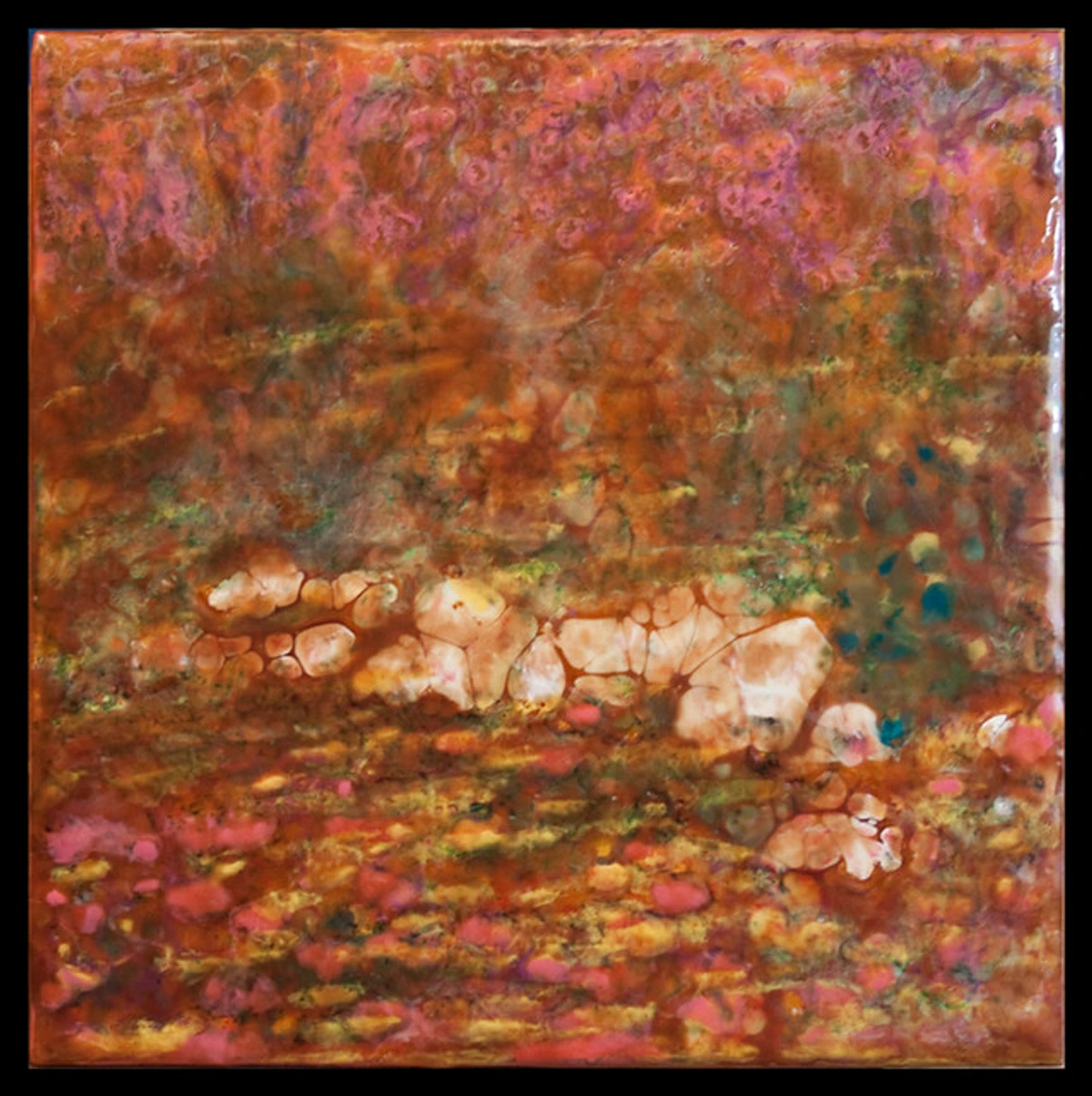
https://live.staticflickr.com/2796/4517666735_898124fb9f_z.jpg, https://creativecommons.org/licenses/by-nc-nd/2.0/
- Versatility: And let me tell you, it's amazingly versatile! You can carve it, scrape it, build it up, embed things in it (think bits of paper, fabric, even metal), polish it, even incorporate other mediums and cold wax medium for varied effects. It’s incredibly forgiving and tactile, allowing for endless experimentation and the creation of rich, layered mixed-media pieces, even extending into three-dimensional sculptural forms. It's truly a playground for creativity; I find myself constantly discovering new ways to manipulate it, leading to unexpected breakthroughs.

https://live.staticflickr.com/4017/4296072688_d990d54448_b.jpg, https://creativecommons.org/licenses/by-nc-sa/2.0
- A Unique Process: There's just something ritualistic and engaging about working with heat and wax. The gentle hum of the heat gun, the sweet scent of beeswax (which is surprisingly pleasant, like warm honey on a cold day!), the way the colors melt and blend... it’s an experience in itself, almost meditative, connecting you to a lineage of artists spanning millennia. It's like an ancient aromatherapy session with a side of creative magic! It’s a process where you truly feel connected to your materials and the history they carry. For me, it grounds me, reminds me that art is as much about the physical act of creation as it is about the finished product.
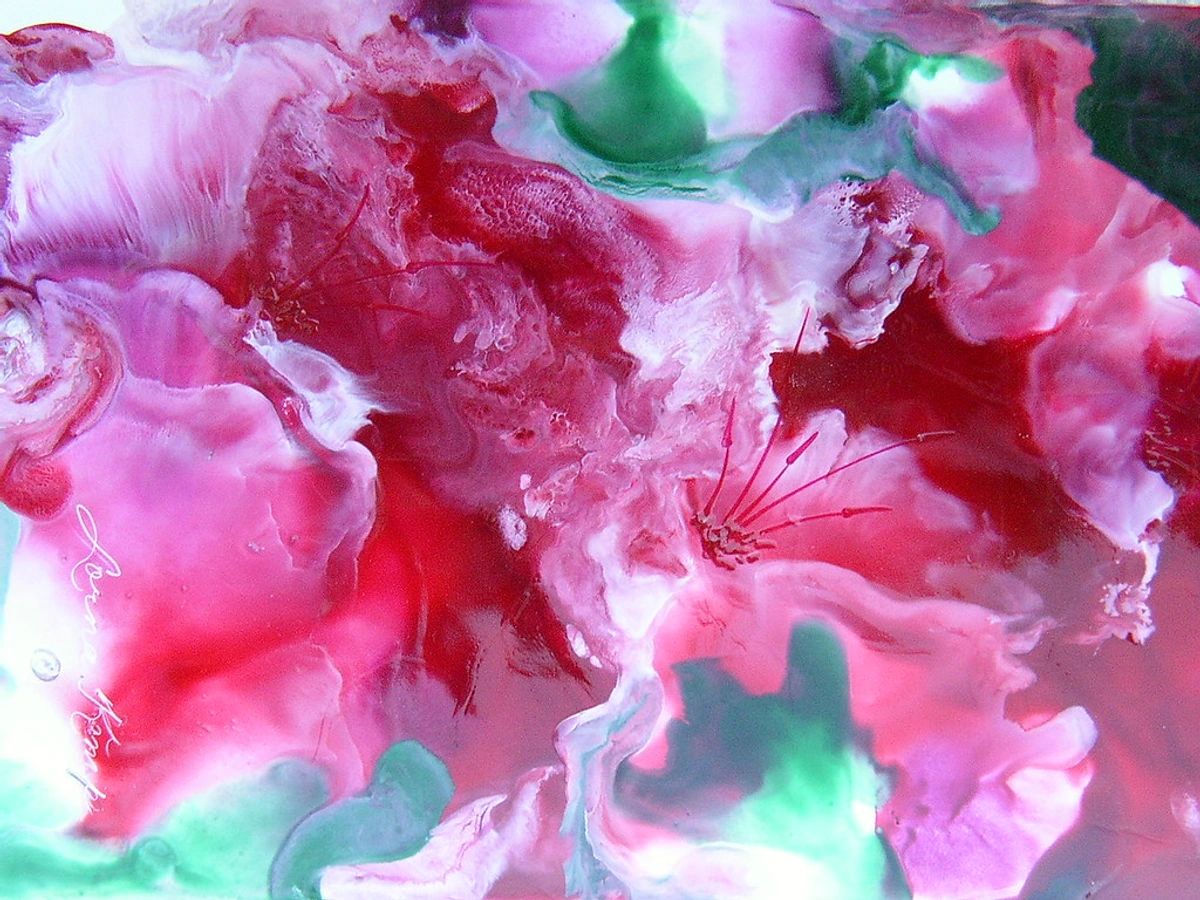
https://live.staticflickr.com/5142/5601488334_423d21b706_b.jpg, https://creativecommons.org/licenses/by-nc-nd/2.0/
It truly feels like a full circle moment, doesn't it? From the tombs of Egypt to modern galleries, wax art has definitely earned its place.
Ready to Explore Encaustic?
If all this talk of molten wax and vibrant layers has sparked a little fire in your artistic soul, you might be wondering how to dip your toes (carefully, of course!). I remember feeling the exact same way. The good news is, getting started with encaustic painting is surprisingly accessible, though it does require a few specific tools. I was a bit daunted at first, picturing elaborate setups, but my initial excitement quickly overcame any hesitations.
Your Beginner's Encaustic Toolkit
When I first started, I found that having these basic items was all I truly needed:
- Heat Source: A simple heat gun is a fantastic and affordable start. Professional heat guns (around $50-$100) offer good control.
- Encaustic Medium: You can buy pre-made encaustic medium (beeswax and damar resin already combined) or purchase raw beeswax and damar resin separately to mix yourself. Starter packs usually cost $50-$100.
- Heated Palette: An electric griddle (around $50-$150) works wonderfully for beginners, or invest in a specialized encaustic heated palette.
- Rigid Supports: Good quality wood panels are essential.
- Brushes & Tools: Natural bristle brushes (wax cleans out easily when hot), spatulas, and carving tools.
- Ventilation: A must-have! An open window and a fan are crucial for proper air circulation.
Your First Fiery Steps
For a first project, I'd suggest starting with something simple to get a feel for the medium: maybe a textural study, focusing on building up and scraping away layers to explore the unique surface qualities. Or try a color blending exercise to see how the molten wax creates stunning transitions. A simple layered landscape with earthy tones, focusing on fusing each layer to create depth, is also a fantastic entry point. You could even try embedding a small, flat, organic object like a dried leaf or a piece of thin fabric to see how the wax encapsulates it. There are countless online tutorials and workshops available these days, offering a fantastic way to learn the ropes from experienced artists. I still remember the thrill of my first successful fusion – it felt like pure magic! It’s a journey of experimentation, patience, and a little bit of playful daring, but one that promises incredible rewards. Why not look for a local workshop or grab a starter kit? You might just discover your next passion, and start your own fiery love story with wax. Go on, take that first step, I dare you!
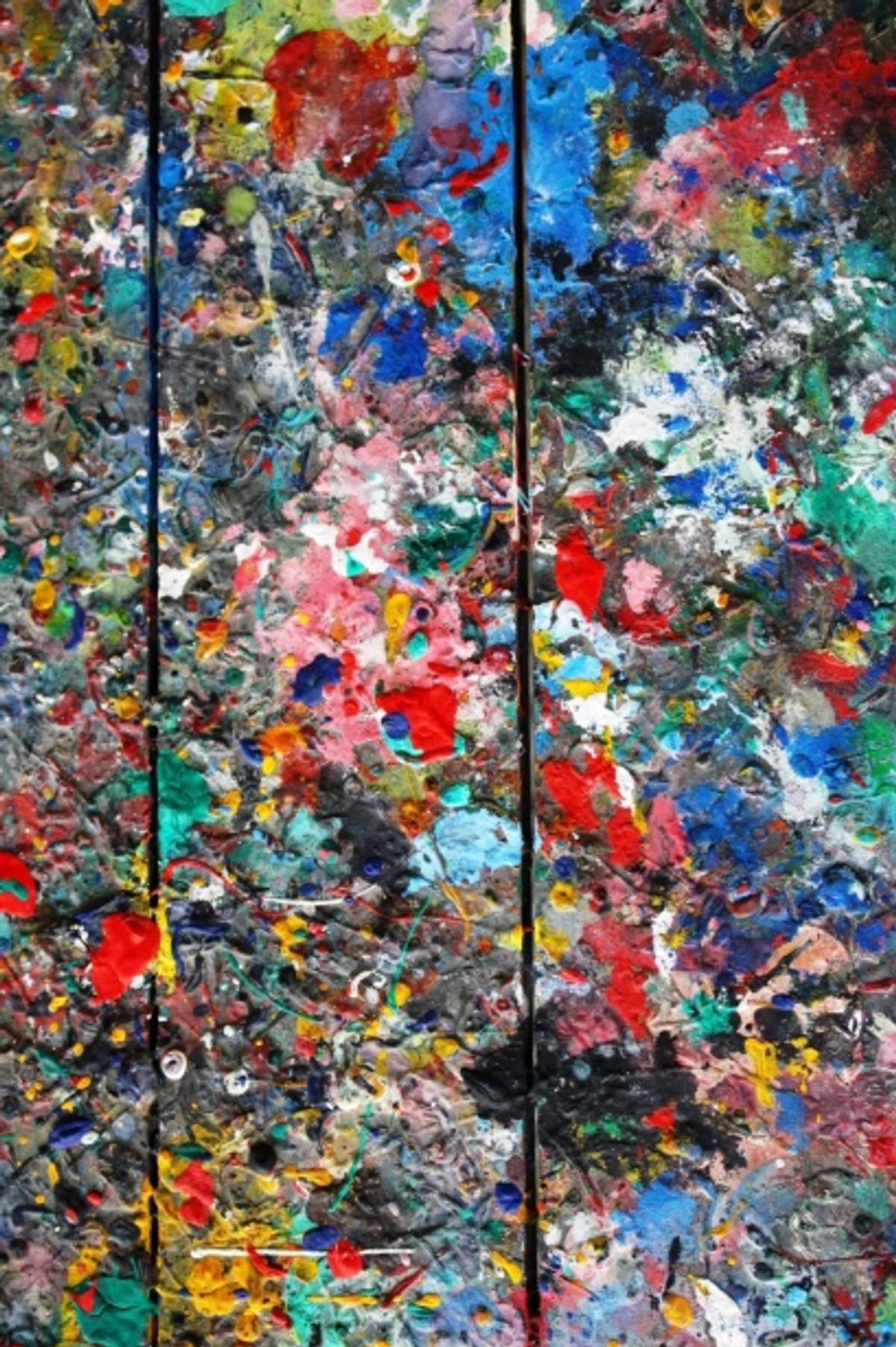
https://www.publicdomainpictures.net/pictures/250000/nahled/messy-colorful-artists-palette.jpg, https://creativecommons.org/publicdomain/zero/1.0/
Your Burning Questions Answered: An Encaustic FAQ
When I first started exploring encaustic, my head was buzzing with questions. So, I figured you might have a few too! Here are some of the burning questions I often get asked about this incredible art form:
Q: So, what kind of wax is used?
A: Good question! Primarily beeswax, known for its purity, pliability, and beautiful natural translucence. Most artists today gravitate towards either unbleached natural beeswax for its warm tone or bleached white beeswax for purer colors. This beeswax is typically combined with a small amount of damar resin, a natural tree sap, to create what's known as "encaustic medium." This resin hardens the wax, increases its melting point, and enhances its luminosity and adhesion, making the wax more durable and luminous. A common modern starting ratio for prepared encaustic medium is about 8 parts beeswax to 1 part damar resin, but artists often adjust this significantly for desired effects like increased hardness, flexibility, or textural quality. The beauty is in the adaptability!
Q: What types of heat sources do encaustic artists use?
A: Ah, the tools of the trade! Artists primarily use heated palettes (like a griddle to keep the wax molten), heat guns (for fusing layers, creating texture, or subtle blending), and sometimes torches (for more intense fusing, bubbling effects, or polishing). Each tool offers different control and effects, and often artists will use a combination for various stages of their work. It's about finding what feels right for your process and the effects you want to achieve. Experimentation is key!
Q: Is encaustic painting safe?
A: Yes, with proper precautions, it can be very safe. The main consideration is always good ventilation to disperse any fumes. The primary fumes you'll notice are the minimal, sweet-scented vapors from heated beeswax and damar resin, which many artists find quite pleasant. However, some individuals can be sensitive or allergic to beeswax or damar resin, so it's wise to test for sensitivities if you have concerns. Additionally, it's important to remember that certain pigments can be toxic if inhaled, so always choose artist-grade, stable pigments and ensure proper airflow. Working with heat means exercising caution to avoid accidental burns from hot tools or molten wax. Always work in a well-ventilated area (near an open window with a fan, or even an extractor fan), use appropriate safety gear (like heat-resistant gloves), and be mindful of hot surfaces. Think of it like cooking – you use heat, so you need to be careful!
Q: Is encaustic painting difficult to learn?
A: Honestly, like any art form, it takes practice, but it's incredibly rewarding! The heat adds a unique challenge, which I personally find a lot of fun. The learning curve can feel a little steep at first as you get a feel for the molten medium and the fusing process. I remember my first few attempts at smooth fusing looked more like a lumpy, accidental texture experiment – a common beginner's pitfall, often caused by not enough heat, fusing too quickly, or not understanding the wax's flow! Another common challenge is achieving consistent adhesion between layers, which requires patience and proper fusing, ensuring each layer bonds completely. But once you start to understand the wax's flow and the heat's magic, it becomes surprisingly intuitive. There are tons of workshops and online resources available these days, making it easier than ever to learn the ropes. So yes, it requires patience, but it's far from insurmountable. I'd absolutely say give it a try if you're curious!
Q: What kind of support is best for encaustic painting?
A: For encaustic painting, a rigid, absorbent support is paramount. Why? Because the wax is applied hot and hardens into a relatively brittle film; if its support flexes, the wax will inevitably crack or delaminate. This is why wood panels – particularly birch or maple, and especially cradled ones for added stability – are ideal. They offer the necessary rigidity and 'tooth' (a slightly rough surface) for the wax to adhere properly, particularly for the initial layers. The quality of the wood panel is also crucial; look for warp-resistant, stable panels to ensure the longevity of your artwork. While flexible supports like canvas are a definite no-go for traditional encaustic, some artists experiment with treated metal or heavy, rigidly mounted art papers. But for beginners and long-term durability, I always recommend sticking to a good quality wood panel. Think of it as building a house – you need a solid foundation!
Q: Can encaustic paintings crack?
A: Yes, unfortunately, they can crack, but typically only if things go a bit wrong! The main culprits are extreme temperature fluctuations that cause the rigid support (your high-quality wood panel) to expand or contract too drastically, or – a common beginner mistake – improper fusing. If you don't heat each layer sufficiently to bind completely with the one below, it can lead to delamination and cracking over time. Using a low-quality, unstable, or improperly prepared wood panel that warps can also contribute to cracking. But don't worry! A properly executed encaustic piece, on a rigid, inflexible, high-quality support, is incredibly stable and highly resistant to cracking. It’s all about giving the wax a firm foundation and mastering that proper fusion technique. Just like any craft, understanding the material's limits is key.
Q: Can encaustic paintings be scratched or damaged?
A: Encaustic wax, while durable, is relatively soft, especially compared to cured oil paint. This means it can be susceptible to scratching or gouging if not handled with care. To prevent this, artists often frame their work, sometimes behind glass, or display it in shadow boxes to protect the surface from dust and accidental contact. Minor scratches can sometimes be gently buffed out with a soft microfiber cloth, or even re-fused with a heat gun by an experienced artist for deeper marks. The key is careful handling and proper display to protect the unique surface. Think of it like a cherished piece of furniture – it's robust, but still deserves a bit of TLC!
Q: How do I care for an encaustic painting?
A: Great question! Encaustic art is incredibly durable, but it does have some specific needs. To maintain its beauty, avoid extreme temperatures (both hot and cold) and direct sunlight, as these can cause cracking or softening. Also, avoid hanging encaustic paintings in areas with high humidity or significant temperature fluctuations, like bathrooms or near fireplaces. After a few months, you might notice a slight haze or dullness, which is natural. To restore its luster and bring out the depth of the wax, simply "buff" it gently with a soft, lint-free cloth like microfiber, using gentle circular motions. Never use abrasive cleaners, solvents, or polishes, as these can damage the wax surface. For a full rundown, we have an entire article dedicated to how to clean and care for encaustic art.
Q: Does encaustic painting have a strong smell?
A: The process involves heating beeswax and damar resin, which can produce a distinct, warm, honey-like scent. Many artists (myself included!) find it quite pleasant and part of the experience, almost like a natural aromatherapy session while you work! However, good ventilation (like an open window and a fan) is always recommended to ensure proper air quality, just as with any medium involving solvents or fumes.
Q: How does encaustic compare to cold wax medium?
A: While both use wax, they're quite different! Cold wax medium is beeswax mixed with a solvent (like Gamsol) and often a resin, creating a soft, paste-like consistency that's applied at room temperature. It offers beautiful textures and matte finishes, often integrated with oil paint. Encaustic, with its molten application and heat fusion, creates layers with distinct depth and transparency, often with a glossy, highly luminous finish when buffed. Think of cold wax as a textural additive primarily for oils, and encaustic as a standalone hot painting medium with a unique, often sculptural surface quality. If you're curious to explore further, we have an article dedicated to cold wax medium.
Q: Is encaustic painting sustainable or environmentally friendly?
A: This is a really important question! Beeswax itself is a natural, renewable resource, but its harvesting practices can vary greatly, impacting bee health and populations. Many encaustic artists are increasingly mindful of their environmental footprint, seeking ethically sourced beeswax, often from local, sustainable beekeepers who prioritize bee welfare and where beeswax can be a byproduct of honey production. Damar resin is also natural, though its environmental impact depends on sustainable forestry. Compared to some oil paints with heavy metal pigments or plastic-based acrylics, encaustic can be a more environmentally conscious choice. However, the process does require a constant heat source, meaning there's an energy consumption aspect to consider. Artists often mitigate this by using specific energy-saving practices, such as lower-wattage heat tools, working in batches to minimize heat-up/cool-down cycles, or maximizing natural light in the studio. It's about conscious choices throughout the process, like any other art form.
Q: What about the cost or time investment for encaustic painting?
A: Let's be real, diving into any new art form involves some investment, right? Encaustic can be a bit of an initial investment due to specialized tools like heated palettes, heat guns, and good quality wax and pigments. To give you a ballpark, a basic setup might include a heat gun ($50-$100), a heated palette or electric griddle ($50-$150), and basic wax/resin supplies ($50-$100). So, you might be looking at anywhere from $200-$350 initially, but honestly, like any art, you can always scale up or down as your passion grows, and you can often find used equipment to start. Once you have the basic setup, the ongoing material costs are quite comparable to other fine art mediums. As for time, well, like any craft, it demands patience and practice. Fusing layers takes time, and you'll definitely encounter moments where you think, 'Is this even working?!' But the meditative nature of the process often makes it feel less like work and more like an immersive experience. It's a journey, not a race, and the rewards are so worth it!
Q: Does encaustic medium or prepared paints have a shelf life? How should I store them?
A: That’s a smart question! One of the beautiful things about encaustic medium is its incredible longevity. Unlike many other paints that can dry out or spoil, pure beeswax and damar resin, or prepared encaustic paints, essentially have an indefinite shelf life when stored properly. I’ve heard of artists using blocks of medium decades old with no issues! The key is to keep them in a cool, dry place, away from direct sunlight or extreme temperature fluctuations. I usually store my leftover wax blocks in airtight containers to keep dust and debris off them, ensuring they stay clean and ready for the next session. No special refrigeration needed, just common sense care – just like you'd store a good block of cheese, but without the expiration date!

https://upload.wikimedia.org/wikipedia/commons/5/58/Mummy_portrait_of_an_elderly_man_from_Egypt_-Stuttgart_LMW_AS_7.3%2802%29.jpg, https://creativecommons.org/licenses/by-sa/4.0
My Take: An Enduring Legacy
Thinking about encaustic, from those ancient Fayum portraits to the vibrant abstract works I create and admire today, it truly brings home a powerful truth about art: it always finds a way. This millennia-spanning journey, this "fiery love story" as I called it, shows us that despite incredible challenges and temporary eclipses, genuine artistic value, much like the resilient wax itself, can endure and transform. It continuously finds new ways to captivate and inspire across the ages. Techniques might fade, materials might change, but the human desire to create and express ourselves is eternal. And sometimes, the oldest ways truly offer something unique that modern methods simply can't replicate. It's a lesson I've taken to heart in my own work, a philosophy that informs my artistic practice.
For example, the way ancient artists built up layers in Fayum portraits to create an almost sculptural realism, allowing light to interact with translucent surfaces, directly inspires my approach to textural depth in abstract pieces. I explore how luminosity emerges from transparency, not just opaque colors, mirroring the ethereal glow found in those ancient visages. Much like Jasper Johns found a raw, tactile expressiveness in encaustic that oils couldn't achieve for his flags, allowing him to embed materials and build thick surfaces, I too find a freedom in wax that fuels my own creative practice, allowing me to build up rich, layered worlds. The enduring durability of encaustic also speaks to me; it’s a medium that seems to defy time, inviting artists to create works with a profound sense of permanence and a legacy that could span centuries. It's a profound reminder to always look back, learn, and then forge your own path forward.
If this journey has sparked something within you and you're looking to add some unique art to your collection, you might find something interesting over at our art for sale page. Or why not delve deeper into my own artist's journey to see how different art forms influence my work, or even consider trying encaustic yourself? You can also explore curated encaustic art collections if you're looking for inspiration specific to the medium. It might just surprise you with its depth and versatility. And if you're ever in a city with a vibrant art scene, I'd highly recommend visiting contemporary galleries or museums that showcase encaustic art, or even inspiring institutions that champion artistic heritage like the artist's museum in 's-Hertogenbosch, to see how historical influences mingle with contemporary vision.
So, what artistic path will you explore next? What hidden artistic treasures might you uncover if you dared to explore your own fiery passion and trust the journey? The world of art, as encaustic painting shows us, is always waiting for new minds to rekindle old flames.
Notes on Image Usage and Credits:
Woman painting with encaustic wax, using a fan to dry the layers, Minneapolis, USA, 2000- Image:
https://images.zenmuseum.com/my-journey-with-encaustic-painting/4c744f10-90d5-11f0-823d-09a812a8f743.jpg - Credit:
https://live.staticflickr.com/222/479422964_34147de0a5_w.jpg - License:
https://creativecommons.org/licenses/by-nc-nd/2.0/
Mummy portrait, wax encaustic painting on sycamore wood, 2nd century AD- Image:
https://images.zenmuseum.com/what-is-encaustic-painting/45ab08c0-90e6-11f0-9119-ffba0f77f014.jpg - Credit:
https://upload.wikimedia.org/wikipedia/commons/0/0d/Mummy_portrait%2C_wax_encaustic_painting_on_sycamore_wood%2C_2nd_century_AD%2C_Roman_Egypt%2C_Badisches_Landesmuseum_Karlsruhe%2C_Germany_%2831838861225%29.jpg - License:
https://creativecommons.org/licenses/by-sa/2.0
Mummy portrait of a woman from er-Rubayat - Berlin AS 31161-9- Image:
https://images.zenmuseum.com/my-journey-with-encaustic-painting/2acbf9d0-90d5-11f0-8288-25af8410691d.jpg - Credit:
https://upload.wikimedia.org/wikipedia/commons/5/59/Mummy_portrait_of_a_woman_from_er-Rubayat_-_Berlin_AS_31161-9_%2802%29.jpg - License:
https://creativecommons.org/licenses/by-sa/4.0
Three vibrant red poppies painted with encaustic beeswax technique, with black stems and leaves, on a white background with black dots.- Image:
https://images.zenmuseum.com/what-is-encaustic-painting/362cac20-90d0-11f0-9f0b-4b901f52183b.jpg - Credit:
https://live.staticflickr.com/5302/5601488526_fec5209393_b.jpg - License:
https://creativecommons.org/licenses/by-nc-nd/2.0/
Garden Wall, a wax encaustic painting by Sharon Sperry Bloom, showcasing textured layers of earthy tones with pops of pink and green.- Image:
https://images.zenmuseum.com/my-journey-with-encaustic-painting/43d287f0-90d5-11f0-8b7d-b11b87a96966.jpg - Credit:
https://live.staticflickr.com/2796/4517666735_898124fb9f_z.jpg - License:
https://creativecommons.org/licenses/by-nc-nd/2.0/
Emma modern encaustic portrait by Jean Denis, 21st century- Image:
https://images.zenmuseum.com/what-is-encaustic-painting/4065b510-90d0-11f0-928b-bdefeb9f4bb8.jpg - Credit:
https://live.staticflickr.com/4017/4296072688_d990d54448_b.jpg - License:
https://creativecommons.org/licenses/by-nc-sa/2.0
Vibrant pink and red petunia-like flowers created with encaustic beeswax painting technique, showcasing fluid textures and delicate stamen details.- Image:
https://images.zenmuseum.com/what-is-encaustic-painting/2a3b92f0-90d0-11f0-9f0b-4b901f52183b.jpg - Credit:
https://live.staticflickr.com/5142/5601488334_423d21b706_b.jpg - License:
https://creativecommons.org/licenses/by-nc-nd/2.0/
A palette filled with colorful, molten wax, hinting at the creative possibilities of encaustic painting.- Image:
https://images.zenmuseum.com/abstract-art-on-wood-panels-exploration/b242af80-913e-11f0-b5ce-1dfa3746de4c.jpg - Credit:
https://www.publicdomainpictures.net/pictures/250000/nahled/messy-colorful-artists-palette.jpg - License:
https://creativecommons.org/publicdomain/zero/1.0/
Encaustic painting of an elderly man's mummy portrait from Egypt- Image:
https://images.zenmuseum.com/what-is-encaustic-painting/4d28eb50-90d0-11f0-928b-bdefeb9f4bb8.jpg - Credit:
https://upload.wikimedia.org/wikipedia/commons/5/58/Mummy_portrait_of_an_elderly_man_from_Egypt_-_Stuttgart_LMW_AS_7.3_%2802%29.jpg - License:
https://creativecommons.org/licenses/by-sa/4.0




